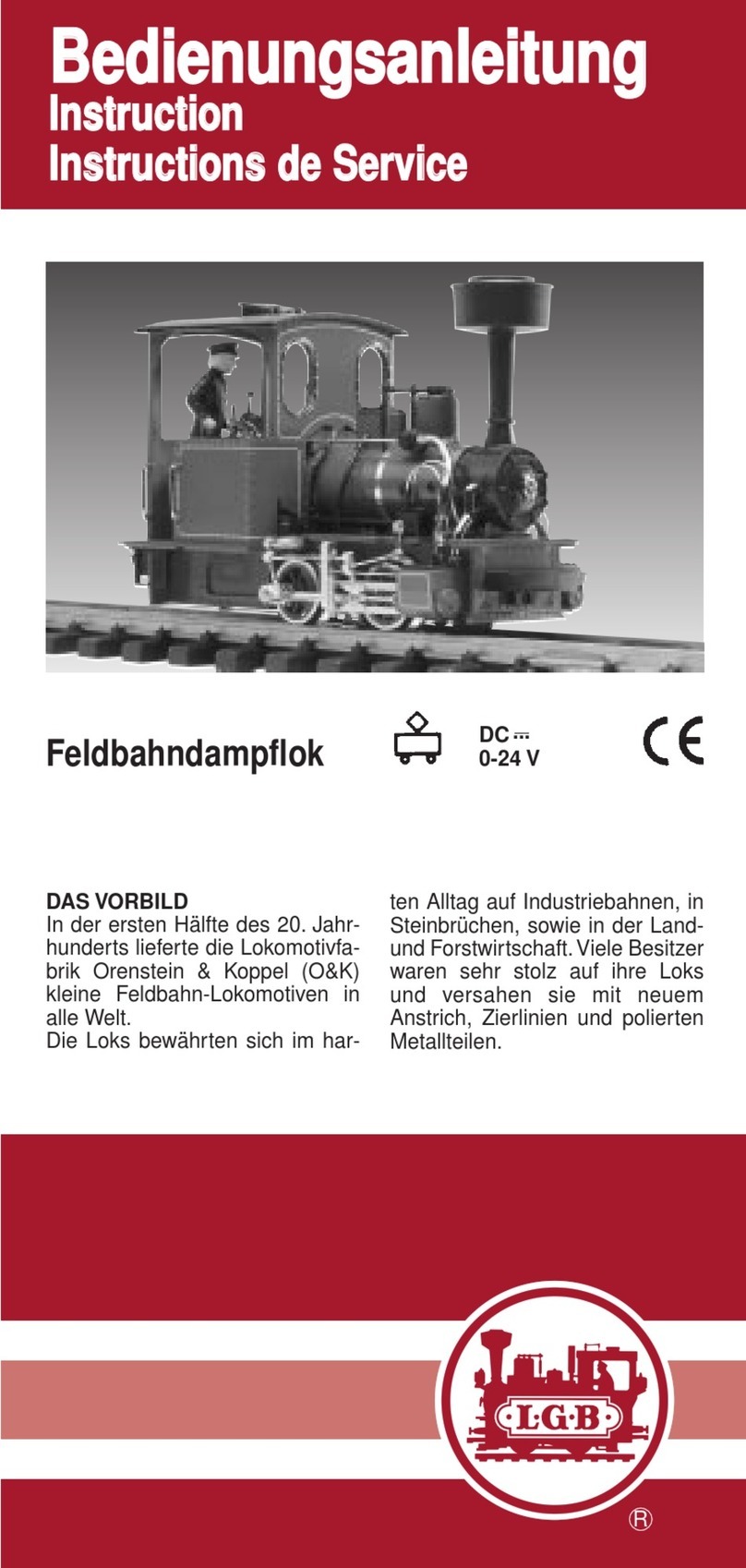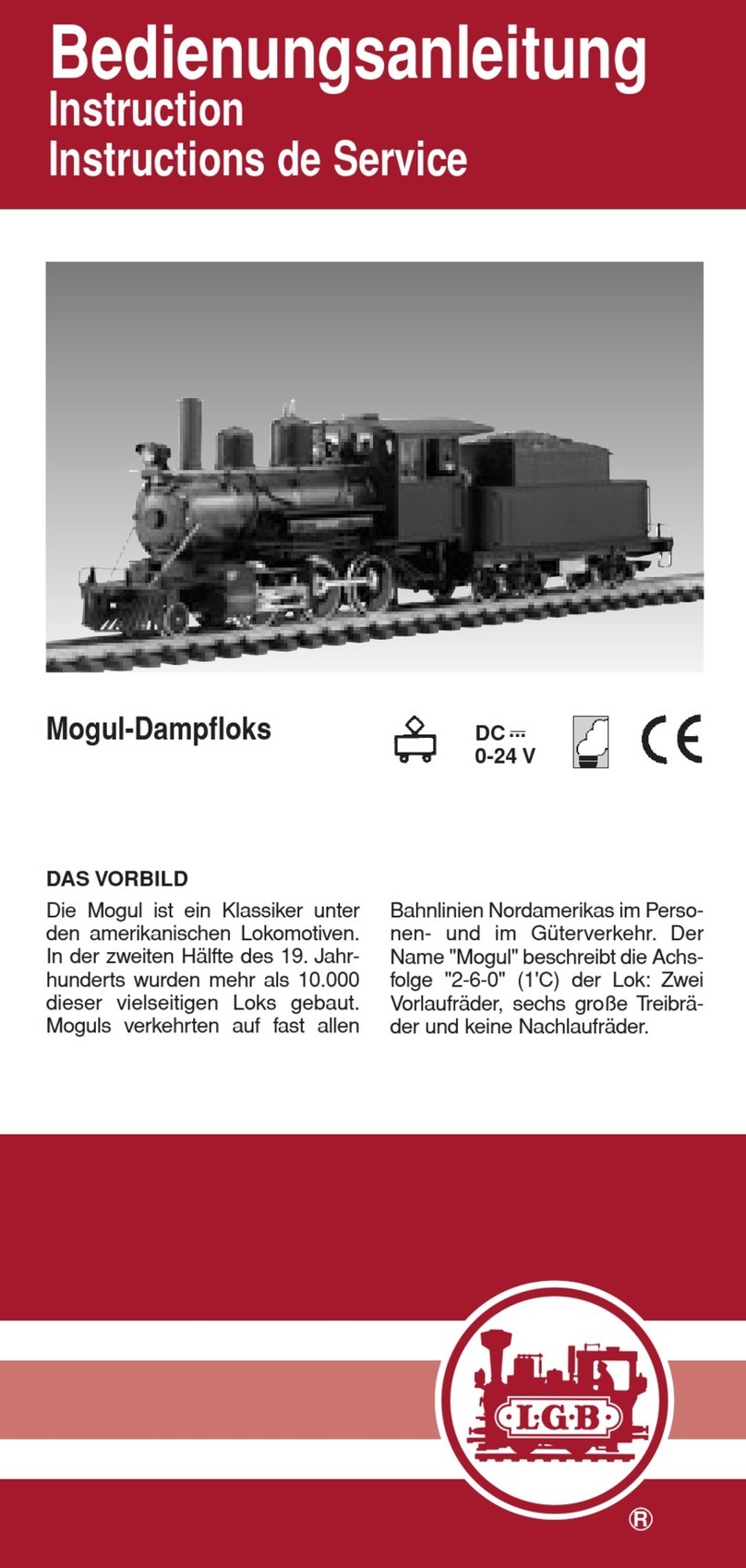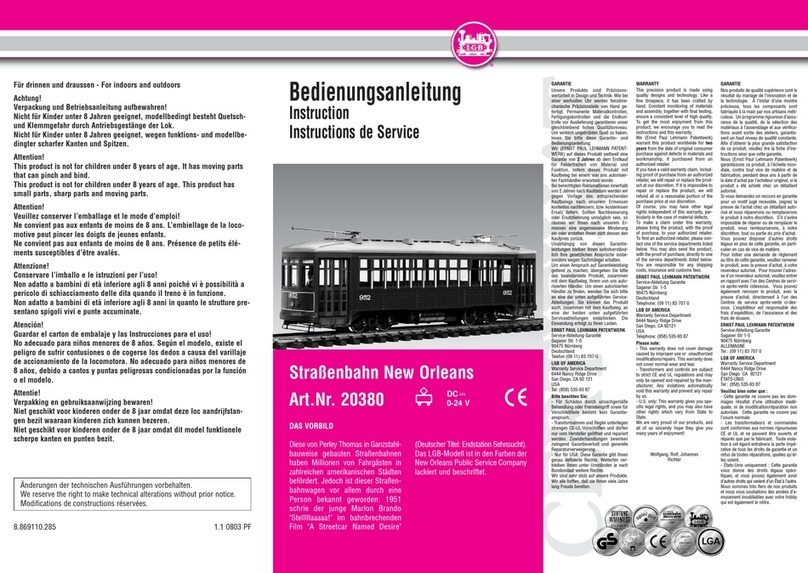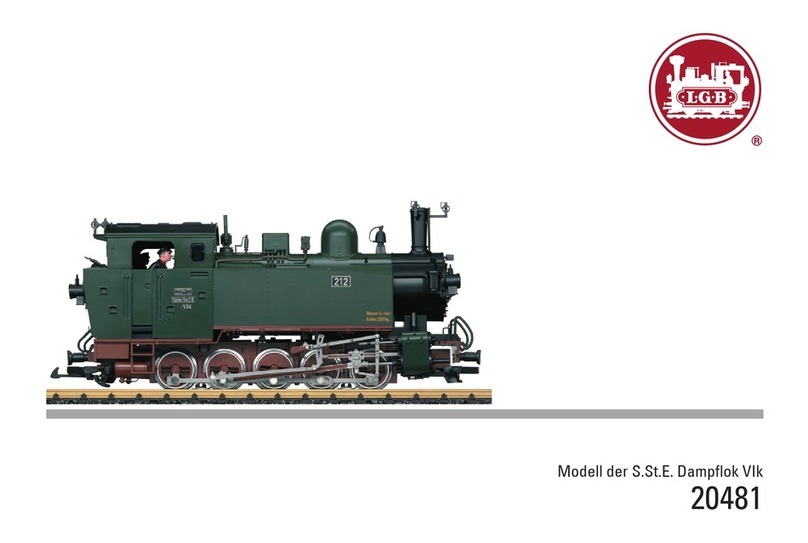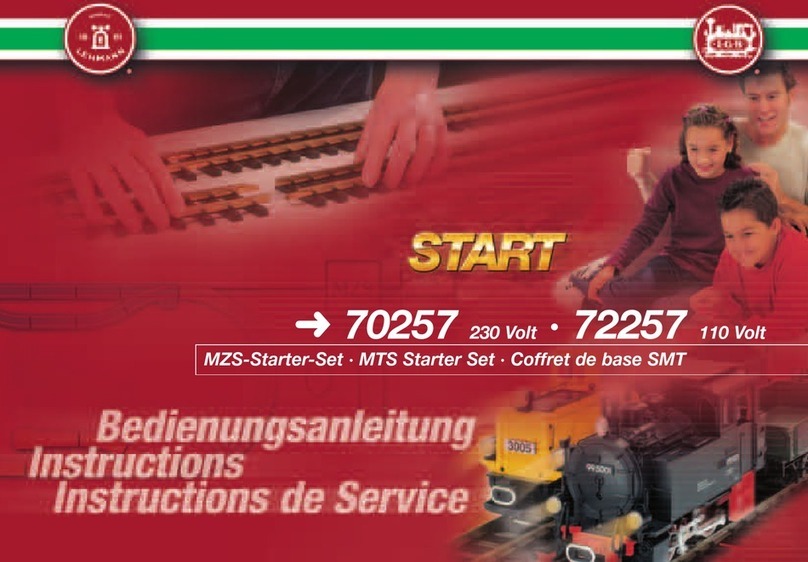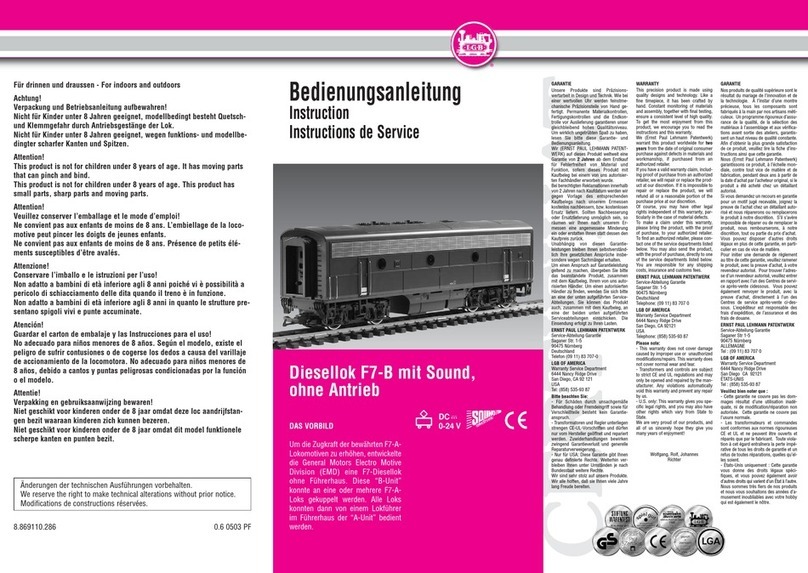
4
Vorbemerkungen
Für die LGB gibt es zwei Kupplungssysteme:
1. Hakenkupplung (asymmetrisch oder symmetrisch)
2. Klauenkupplung
Werksseitig sind die LGB-Fahrzeuge mit der asymmetri-
schen Hakenkupplung ausgerüstet. Jedem Wagen liegt
ein zweiter Kupplungshaken bei, damit dieser auf die
symmetrische Kupplung aufgerüstet werden kann.
Asymmetrische Kupplung
Die LGB-Fahrzeuge ab Baujahr 1980 haben an einer
Seite einen Kupplungshaken, der nach allen Seiten
schwenkbar gelagert ist. Der Vorteil dieser asymmet-
rischen Kupplung: Einzelne Wagen können aus einem
Zugverband problemlos herausgenommen werden.
Symmetrische Kupplung
Die LGB-Fahrzeuge ab Baujahr 1980 kann man leicht mit
einem zweiten Kupplungshaken ausrüsten. So entsteht
eine symmetrische Kupplung. Ihre Pluspunkte:
1. sicheres Kuppeln auch auf uneben verlegten Gleisen
2. keine ungewollten Entkupplungen
3. keine Schwierigkeiten bei Kehrschleifen.
Klauenkupplung
Die LGB-Klauenkupplung 64192 (2019/2) ist als Zurüstteil
lieferbar. Sie ist den in Amerika gebräuchlichen Auto-
matikkupplungen nachgebildet und voll funktionstüchtig.
Das sind ihre Besonderheiten:
1. beweglicher Kupplungskopf, dadurch perfektes
Kuppeln auch in Gleisbögen möglich
2. Züge lassen sich mit der Klauenkupplung einwandfrei
schieben.
Die Klauenkupplung ist eine symmetrische Kupplung.
Sie wurde für vierachsige LGB-Wagen ab Baujahr 1980
konstruiert. Ihre nachträgliche Anbringung an diesen
Fahrzeugen ist sehr einfach. An zweiachsigen Wagen
kann es mit der Klauenkupplung beim Einbau (die Mittel-
puffer an den Fahrzeugen müssen entfernt werden) und
im Schiebebetrieb Probleme geben.
Die Klauenkupplung lässt sich mit dem Elektro-Entkupp-
lungsgleis 10560 einwandfrei entkuppeln.
Kuppeln
Das Kuppeln geschieht durch einfaches Aneinander-
schieben der Fahrzeuge, wobei der Kupplungshaken
bzw. die Klauenkupplung spielend leicht in die Kupplung
des anzukuppelnden Fahrzeugs einrasten.
Entkuppeln
Das vorbildgetreue Entkuppeln von LGB-Fahrzeugen
kann mit einem ferngesteuerten Elektro-Entkupplungs-
gleis 10560 oder mit dem Dauerentkuppler 10520
erfolgen.






